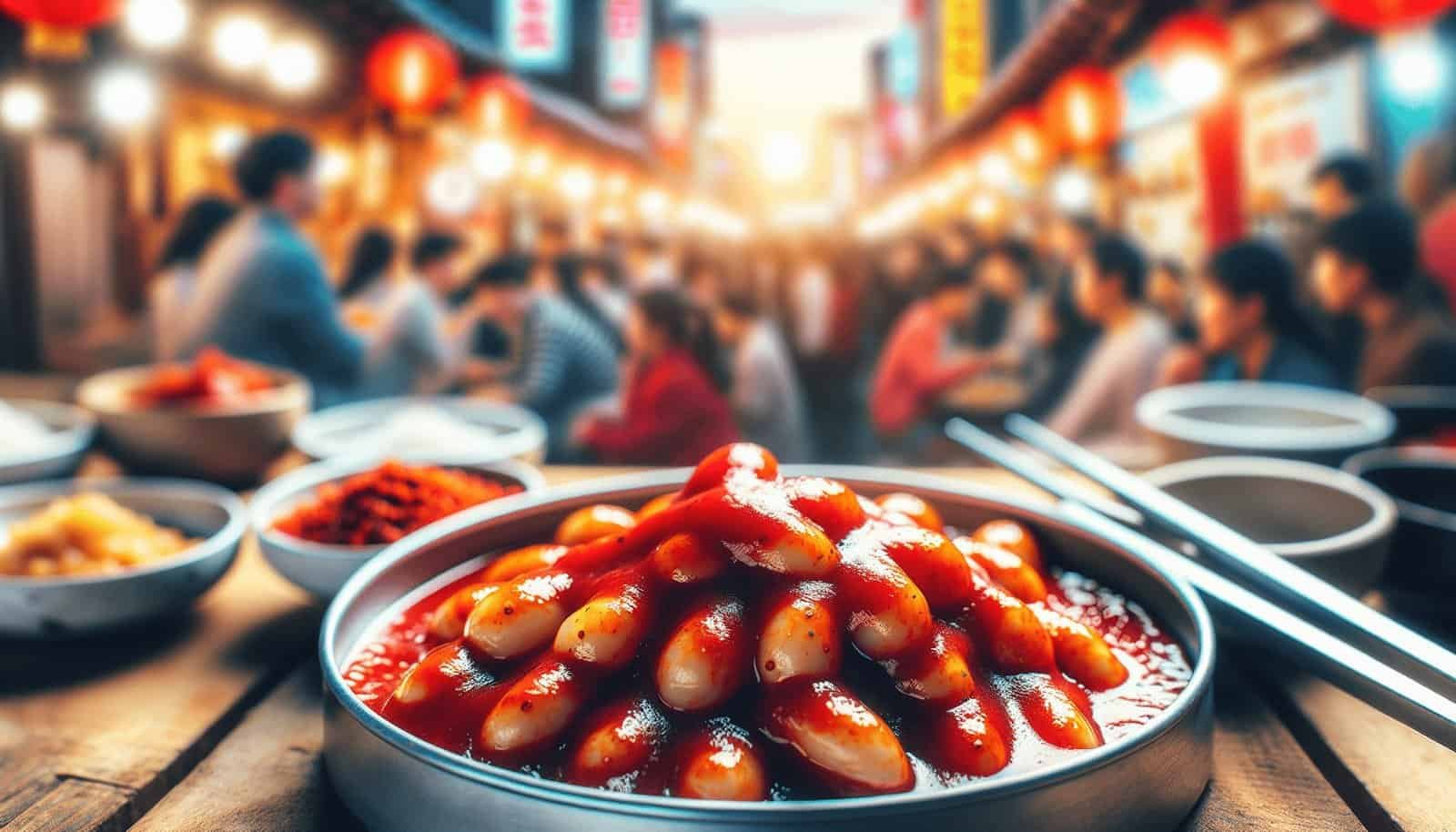Have you ever walked down a bustling street in South Korea, your senses overwhelmed by the intoxicating aromas of frying batter, sizzling meats, and sweet, tantalizing treats? Korean street food is a vibrant and integral part of the nation’s culinary landscape, and it’s something that you absolutely must experience. But what exactly makes up this delicious array of street fare? Let’s take a closer look at some of the most popular dishes associated with Korean street food vendors.

The Culture of Korean Street Food
Korean street food culture is both a historic and modern gastronomic phenomenon. Vendors line the streets, especially in busy markets and around popular tourist destinations, selling a variety of treats from small carts and food stalls. This tradition, known as “pojangmacha”, meaning “covered wagon,” began in the mid-20th century. These mobile food vendors offer a convenient, affordable, and quick meal option for locals and tourists alike.
The Pojangmacha Experience
When you approach a pojangmacha, expect warmth both from the food and the vendors. There’s an unspoken understanding that you’re there for more than just food; it’s an experience. The clinking sound of metal spatulas, the sizzling from the griddle, and the lively chatter all contribute to a unique dining atmosphere that you won’t forget.
Popular Categories of Korean Street Food
Savory Dishes
First up, let’s explore the savory side of Korean street food. These dishes often combine bold flavors and textures, making every bite an experience in itself.
Tteokbokki (떡볶이)
Tteokbokki is a beloved spicy food made of chewy rice cakes, fish cakes, and a sweet, spicy sauce based on gochujang (red chili pepper paste). Despite its simplicity, this dish packs a punch. Presented in a vibrant red sauce, it’s impossible to miss at any street-stand.
Kimchi Bokkeumbap (김치볶음밥)
This is your go-to if you’re a fan of fried rice. Kimchi bokkeumbap combines day-old rice with stir-fried kimchi, vegetables, and sometimes a bit of pork, all topped with a sunny-side-up egg. The combination of the tangy, spicy kimchi with the satisfying texture of fried rice is a match made in culinary heaven.
| Ingredient | Description |
|---|---|
| Rice | Day-old rice works best |
| Kimchi | Fermented vegetables that offer a tangy, spicy flavor |
| Pork (optional) | Adds a richer, meatier texture |
| Egg | Adds a creamy texture when broken over the rice |
Hotteok (호떡)
Hotteok is a delicious stuffed pancake, typically filled with brown sugar, honey, nuts, and sometimes seeds. While it might seem simple, the trick lies in perfecting the dough and the sweet, gooey filling inside.
Desserts and Sweet Treats
Korean street food isn’t just about savory snacks; there are plenty of sweet treats to satisfy your sugar cravings.
Bungeoppang (붕어빵)
Bungeoppang is a fish-shaped pastry, often filled with sweetened red bean paste. Looks might be deceiving here; while it resembles a fish, its flavor is far from oceanic. The outer layer is crispy, while the inside is soft and sweet, providing a balanced flavor with each bite.
Hotteok (호떡)
Yes, Hotteok makes it to both lists! Though often categorized as a savory dish, sweet versions of Hotteok are just as popular, and arguably more iconic. Filled with brown sugar, honey, and nuts, they are especially popular in the winter months.
Snacks and Others
Some Korean street food items are hard to categorize but impossible to ignore. These snacks are great to munch on as you stroll through the streets.
Odeng (오뎅)
Odeng, or fish cake, is commonly skewered on a stick and served in hot broth. It’s warm, comforting, and perfect on chilly days. The broth itself can often be as flavorful as the fish cake, made from a base of boiled fish, radish, and seaweed.
Gimbap (김밥)
Gimbap resembles sushi but comes with a Korean twist. Seaweed (gim) is wrapped around rice (bap), along with various fillings like vegetables, meat, and occasionally pickles. It’s a fantastic option if you’re on the go but still want something filling and nutritious.
| Common Gimbap Fillings | Description |
|---|---|
| Pickled Radish (Danmuji) | Adds a crunchy, tangy element |
| Spinach | Usually seasoned and blanched |
| Carrots | Adds a fresh and colorful crunch |
| Egg | Cooked into a thin omelet before being sliced and included |
| Imitation Crab Meat | Adds a slightly sweet, savory flavor |

Seasonal Korean Street Foods
Korean street food isn’t just a year-round phenomenon; different seasons offer their own unique treats.
Winter Delights
Winter brings cold temperatures, and street foods adapt accordingly. Vendors offer warming dishes to help you through the chilly months.
Hodugwaja (호두과자)
Hodugwaja are walnut pastries filled with red bean paste and walnut pieces. They are particularly popular during the colder months, offering a warm, nutty flavor that pairs well with a hot drink.
Jjinppang (찐빵)
These are steamed buns filled with sweet red bean paste, perfect for warming your hands as much as your stomach. The buns are fluffy and soft, making them a comforting snack on cold days.
Summer Treats
Just as winter has its own specialties, summer is a time for cool and refreshing street food options.
Patbingsu (팥빙수)
Patbingsu is a popular shaved ice dessert topped with sweet red beans and various toppings like fruit, condensed milk, and even ice cream. It’s a cooling treat that’s perfect for combating the summer heat.
Eomuk Tang (어묵탕)
Okay, this one might be a bit unconventional—it’s often enjoyed year-round but takes center stage in the summer because it’s light and easy to eat. This clear fish cake soup is often flavored with spring onions and light broth, making it a refreshing sip amidst the summer hustle.

Street Food Dips and Sauces
No exploration of Korean street food would be complete without discussing dips and sauces. These condiments elevate the taste of the food and often act as a final touch that brings everything together.
Gochujang (고추장)
This is perhaps the most iconic Korean condiment. Made from red chili paste, fermented soybeans, rice, and salt, gochujang has a rich, spicy flavor that pairs perfectly with various street food items.
Soy Sauce-Based Dips
Often, you’ll find soy sauce-based dips mixed with garlic, green onions, and sesame oil. They provide a savory dip that complements the flavors of fried or grilled items.

Tips for Navigating Korean Street Food
Navigating the bustling street food scene can be a bit overwhelming but here are some tips to help you make the most of your culinary adventure.
Timing and Location
While Korean street food is available all day long, evening times are when it truly comes alive. Popular spots include Myeongdong, Hongdae, and Insadong in Seoul. These areas are bustling with activity and offer a wide variety of foods.
Cleanliness and Safety
It’s essential to be mindful of food safety. Stick to stalls that look clean and have a high turnover of food. This ensures that what you’re eating is fresh and safe.

Conclusion
The streets of South Korea are a gastronomic playground where every corner offers something new and delightful to try. Whether you’re after something savory or sweet, hearty or light, there’s a street food vendor ready to make your tastebuds dance. From the spicy allure of tteokbokki to the crispy, sweet goodness of bungeoppang, each dish tells its own story, waiting for you to take the first bite. So, next time you find yourself wandering the streets of Korea, let your senses lead the way and indulge in some of these popular street food dishes.
Enjoy your culinary journey and savor each unique flavor!
